You were back from school. You’d sat through the programmes aimed at the younger kids and were eagerly waiting for Grange Hill to start. But first, Ted Heath and his Music struck up the easily recognisable notes of their cover of Johnny One Note, and John Craven’s Newsround hit the air!
Back in the early 70s there was no news provision for children on television at all. Edward Barnes, the deputy head of BBC Children’s Television at the time had recently seen a survey which had discovered that only 0.7% of children ever watched any news or current affairs programmes. Barnes started thinking about a short bulletin aimed at children. Originally it was Jonathon Dimbleby that was wanted for the presenter role, but when he turned it down Barnes asked the now-iconic John Craven (who was at the time working on the factual series Search for BBC Bristol) to step in.
The newly-formed team had a big challenge on their hands: to keep the gravitas of the international news stories it had to portray whilst at the same time remembering that their prospective audience were children, and so many disturbing aspects and images would need to be edited out. Craven also decided that by copying the look of the main BBC news presenters (i.e. sitting behind a desk wearing a suit) children might feel they were back at school and therefore not want to listen. Instead - perching jauntily on top of the desk - he took to wearing psychedelic shirts and tie combos, although thousands will more fondly remember him later on wearing one of his trademark chunky knit (and occasionally hideous) jumpers.
John Craven’s Newsround was given a twice weekly airing from 4 April 1972 on a trial run of six weeks; ready to be pulled if it wasn’t successful with its intended audience. They didn’t need to worry - by 1974 it was on air from Monday through to Thursday. Taking its source stories from the BBC News department, John Craven’s Newsround retained editorial control, and by carefully removing graphic images, violence and other disturbing content, plus providing explanatory details on the big stories they created a show that children could relate to.
This was revelatory; ‘grown-up’ news programmes assumed that its audience already knew the background behind the events it showed; the Newsround team recognised immediately that this had to be different in their case. It wasn’t that children weren’t interested in watching the news, more that they couldn’t watch the news because they didn’t understand what was going on. So, by explaining the history behind the troubles in Northern Ireland for example, children were then able to engage and talk about what was happening currently. Aside from international news, the programme also focused in on issues that mattered to children, and investigative reports often covered things like pocket money, school uniforms and animals.
John Craven’s Newsround forged a strong path for itself; in the 70s and early 80s UK television had no daytime news bulletins, so any stories that broke during the day could be captured by Newsround first, although they often had to fight for this. This meant that huge stories, such as the Pope’s assassination attempt, Margaret Thatcher becoming leader of the Conservatives, the Challenger Space Shuttle tragedy in 1986 and the first report from the fire at Windsor Castle were all Newsround exclusives.
From its beginning until 1986 Craven was the main presenter, with outside news being reported in by Lucy Mathen. If a stand-in presenter was needed in the early days then they would come from the main BBC bulletins, but by the beginning of the 1980s Newsround had its own team underway, including Roger Finn and Helen Rollason. Craven by now was also the programme editor.
The lure of the chunky jumpers wasn’t enough to keep him on the programme forever though, and Craven left Newsround on 22 June 1989. You knew it was coming; not long before this the programme’s title was changed from ‘John Craven’s Newsround’ to plain old ‘Newsround’.
He was also well-known by this time for his contribution to Saturday morning television; featuring on Multi-Coloured Swap Shop with Noel Edmunds and Saturday Superstore with Sarah Greene, Mike Read and Keith Chegwin amongst others. He then went on to present Sunday morning favourite Countryfile. He received an OBE for services to rural and children’s broadcasting in 2000, the Baird Medal in 2002 and a Children’s BAFTA on Newsround’s behalf in 2011.
Still a flagship BBC programme, Newsround now runs through-the-day bulletins seven days a week, broadcasting from MediaCityUK in Salford. Nobody wears awful jumpers any more though, which is a shame.


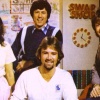
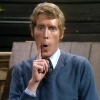
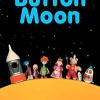

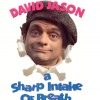
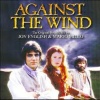
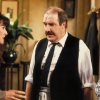
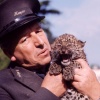
Do You Remember John Craven's Newsround?
Do You Remember John Craven's Newsround?